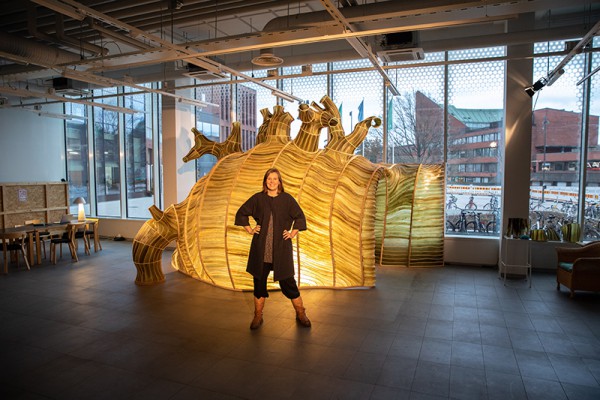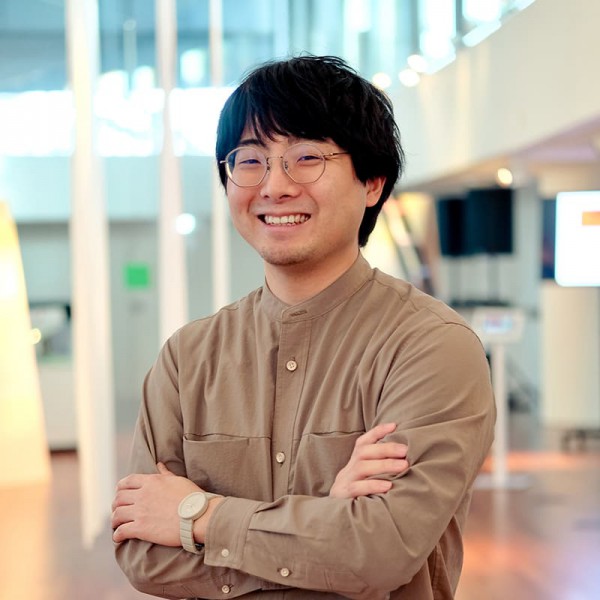Description
Jane Jin Kaisen, Of The Sea, 2013, Single channel video, color, sound, 2min. 15sec.
In Of the Sea, the artist is seen walking along the black lava rock shore of Jeju Island where her mother and grandmother used to earn a living as haenyeo, women sea diver. She is carrying discarded items used for diving as well as the book Annals of the Jeju Haenyeo’s Anti-Japanese Resistance written by her grandfather while he served as Head of the Commemoration Committee for the Jeju Haenyeo’s Anti-Colonial Resistance Movement. The book was published in 1995 on occasion of the First Memorial Ceremony for the Jeju Haenyeo Anti-colonial Resistance, a movement that erupted in 1931-1932 when the haenyeo started marching in protest against the Japanese colonial forces along the same coast where the artist is seen walking almost eight decades later.
The video is juxtaposed with the song Song of the Haenyeo, the notes of which are printed on the first pages of the artist’s grandfather’s book. The song is composed around a Japanese melody, but the lyrics are altered and are written by Gwan-soon Gang, a social activist and leader of the resistance movement, while he was imprisoned. The song, although it was banned, was sung by haenyeo and attests to the gendered dimensions of Jeju haenyeo culture, the harsh and dangerous vocation of diving, and their reliance on the sea for survival.
While the careful treatment of the book and the diving tools allude to an attempt at preserving history and bridging the gaps in time and the transmission of intergenerational knowledge, the video ends before the artist reaches the sea. Walking with unsteady awkward movements and dressed in clothing and boots unfit for the environment, there is a sense of discontinuity and rupture, which stands in contrast to the lyrics of the song. In recent decades, haenyeo diving culture has drastically diminished due to modernization, societal changes, industrial farming and destruction of the oceanic environment. With it, the knowledge of the sea and diving, along with the matriarchal cosmology of Jeju and shamanic spiritual culture connected to the sea, is no longer being seamlessly passed on from mother to daughter.
Gilles Aubry, Atlantic Ragagar, 2022, Single channel video, color, sound, 31min. 43sec.
Shot in collaboration with biologist Younes Boundir, Atlantic Ragagar is an experimental film on seaweed and pollution on the Moroccan Atlantic coast. With its clear water, the Sidi Bouzid beach hosts dozens of seaweed species. Further south in Safi, marine biodiversity suffers from pollution caused by industrial phosphate plants. The film is an attempt to listen to coastal life, inviting the spectator into a process of ecological transformation. If pollution often remains hidden in the landscape, the effects of toxicity are rendered through the voice and bodily presence of the main character performed by Imane Zoubai. As she hums, sings, breathes, and silently interacts with algae, a new figure progressively emerges, “maouj”, an aquatic body open to transcorporeal and interspecies speculations.
Calypso36°21 & Derya Akkaynak, Untitled, 2021, Single channel video, text, sound, 9min. 4sec. Supported by Sea Art Festival 2023.
The sound piece Untitled (titled by Calypso36°21) was created by oceanographer Derya Akkaynak to explain to a large audience her discovery ‘Sea-Thru’. She records herself on her phone. Instead of narrating and explaining Sea-Thru in a scientific way, ‘objective’ and cold, Derya talks about the loss of her mother, her relationship to the sea and how those elements helped her make a huge breakthrough for the ocean. Derya gifted this piece to Justine Daquin in 2021 after a discussion they had together that was part of a larger project of interviews with female ocean scientists. They all approach their discipline with intuition and emotion and thanks to this way of practicing science, made major discoveries and helped heal and care for the ocean.
Jane Jin Kaisen(born 1980 in Jeju Island, lives in Copenhagen) is a visual artist, filmmaker, and Professor of the School of Media Arts, The Royal Danish Academy of Fine Arts.
Spanning the mediums of video installation, narrative experimental film, photographic installation, performance, and text, Kaisen’s artistic practice is informed by extensive interdisciplinary research and engagement with diverse communities. Through multi-year projects and collaborations, she has engaged topics such as transnational adoption, the Korean War and division, the Jeju April Third Massacre, and Cold War legacies. Another recurring focus revolves around nature and island spaces, cosmologies, feminist re-framings of myths, and engagement with ritual and spiritual practices. Her works negotiate and mediate the means of representation, resistance, and recognition, thus contouring alternative genealogies and sites of collective emergence.
Kaisen is a recipient of the New Carlsberg Foundation Artist Grant (2023) and a 3-year work grant from the Danish Arts Foundation (2022). She represented Korea at the 58th Venice Biennale with the film installation Community of Parting (2019) alongside artists Hwayeon Nam and siren eun young jeong in the exhibition History Has Failed Us, but No Matter curated by Hyunjin Kim. She was awarded “Exhibition of the Year 2020” by AICA - International Association of Art Critics, Denmark for the exhibition Community of Parting at Kunsthal Charlottenborg. Kaisen has participated in the biennials of Liverpool, Gwangju, Anren, Jeju, among others, and she had numerous solo exhibitions including recently Jane Jin Kaisen: Braiding and Mending at The Image Centre (2023), Of Specters or Returns at Le Bicolore (2023), Currents at Fotografisk Center (2023), Parallax Conjunctures at Museum of Contemporary Art Detroit (2021), and screenings Dislocation Blues: Jane Jin Kaisen, Tate Modern (2023), Ceremony (Burial of an Undead World), Haus der Kulturen der Welt (2022) to name a few.
She holds a PhD in artistic research from the University of Copenhagen, Department of Art and Cultural Studies, an MFA in Interdisciplinary Studio Art from the University of California Los Angeles, an MA in Art Theory and Media Art from The Royal Danish Academy of Fine Arts, and she participated in the Whitney Museum of American Art Independent Study Program.
Gilles Aubry is a Swiss artist, musician and researcher based in Berlin. His work explores sound and listening as embodied, technological, and ecological practice. His installations, films, performances and radio plays are presented internationally in art institutions, film festivals and music venues. Recent projects include The Gramophone Effect, a sound piece with Robert Millis and the Indian collective Traveling Archive, commissioned by Documenta14 (2017, Kassel and Athens); Black Anthenna, a performance with Nathalie Mba Bikoro for the Tuned Cities Festival (2018, Ancient Messene); Salam Godzilla, a film essay shot in Agadir on the 1960 earthquake (2019, FID Marseille), and The Whistle, a sound installation by the VACUT Group (Voices Against Corruption and Ugly Trading), commissioned by OTO Sound Museum in Zurich (2022).
Derya Akkaynak is a Turkish engineer and oceanographer whose research focuses on imaging and vision underwater. She has professional, technical, and scientific diving certifications and conducted fieldwork from the Bering Sea to Antarctica. Akkaynak was a finalist for the 2019 Blavatnik Awards for Young Scientists for resolving a fundamental problem in underwater computer vision—the reconstruction of lost colors and contrast which led to the development of the Sea-thru algorithm.



